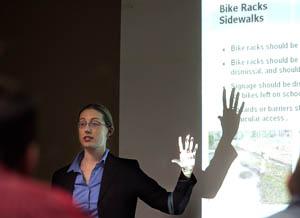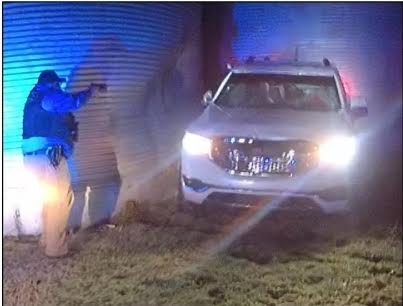Expert teaches school safety
Published 12:00 am Friday, January 13, 2006

- Jim Winn/Daily NewsChristina Bredhold leads a school safety task force session on Thursday afternoon at Western Kentucky University's South Campus.
From bomb-threat protocol to panic bar-laden doors, a school-safety expert helped more than 20 school administrators and first-response personnel get a handle on emergency preparation Thursday afternoon at Western Kentucky University’s Carroll Knicely Center.
A duplicate session was scheduled today from 9 a.m. to noon. The sessions were the first of several ongoing training exercises over the next 18 months, the byproduct of a U.S. Department of Education grant.
Trending
The $471,000 grant was awarded to the Green River Regional Education Cooperative, which includes 32 school districts and more than 200 schools in Kentucky, according to Liz Storey, GRREC’s executive director. Nearly a third of its member districts – 11 schools from southcentral Kentucky – chose to participate in the training, including Allen, Barren, Edmonson, Logan and Simpson.
“Bowling Green is kind of the center,” Storey said of her organization.
Storey and David Keller, who is overseeing the project for GRREC, moderated the first session. Keller introduced the speaker, Christina Bredhold of Risk Solutions International, which he said is a “major player” in the safety and emergency response field.
“These school districts will be in the top 1 percent of school districts in the nation in terms of their capacity to respond to emergencies,” said Keller, who recently retired as the executive director of Kentucky’s School Boards Association.
Risk Solutions will provide vulnerability assessments for two schools in each district, and then train teams comprised of administrators and first-responders to evaluate the remaining schools.
The schools will be rated in multiple categories on a rigorous threat-assessment checklist during walk-through exercises that start in a week. The inspections will take three to seven hours, depending on school size.
Trending
“Christina’s company will be doing the lion’s share of the work,” Storey told the participants.
For the walk-throughs, Storey said, “We envisioned up to five people, and it could even be more than that. Our goal today is to tell you what that’s going to look like.”
Keller said 20 people registered for Thursday’s session and 60 people were expected to attend today. He said these conferences usually connect people from smaller communities. It is important to cultivate and tend working relationships with police and other first-responders, he said.
“When something happens, it’s too late to figure out who your emergency personnel are,” Keller said.
Todd Hazel, a social worker with Simpson County Schools, said he came to learn more about school safety. He said his job involves counseling students with behavioral problems and teaching anger-management techniques.
“Anytime at the middle school, if there’s a student in distress, I’m usually the person who talks to that person,” Hazel said. “I see quite a bit of anger in students,” but “to this point, I’ve seen nothing that’s needed to be reported to the police or authorities.”
Thursday’s session was interactive. Storey said another safety speaker advised her once that student parking lots – typically located on the outskirts of campuses – ideally should be closer to buildings for better surveillance, as they are breeding grounds for outlawed activity.
Jeremy Baird, a loss-prevention specialist from Kentucky’s School Boards Association, supplemented Bredhold’s extensive PowerPoint discussion with his insights. He said the training is important because schools, whether they acknowledge it or not, run like businesses with interrelated components.
“I try to preach that safety dollars, operations, energy efficiency and student safety and test scores – it all revolves around the same common goal,” Baird said.
Larry Brewer, a resource officer, said he patrols five Logan County elementary and middle schools.
“Hopefully, what we learn here we’ll be able to take back to schools and utilize it,” Brewer said.
Bredhold dispensed the threat-assessment checklists. The six categories, such as security hazards, were broken into smaller criteria, such as suicide attempts.
“What’s scary is we’ve had two in our school system this year,” said Sgt. Bruce Marklin of the Elkton Police Department.
Bredhold asked for a show of hands to see how many schools had security cameras and inquired about the status of student drop-off and pick-up zones. Emergency lighting, she said, needs to be checked monthly. She recommended a sexual predator tracking site, www.familywatchdog.us, as another investigative tool to keep tabs on registered child molesters living within the districts.
Throughout the session, Bredhold, who has conducted similar seminars for Detroit’s public schools and more recently in Indiana, tried to equip administrators to think proactively.
“We like to see all ancillary staff trained how to use fire extinguishers,” Bredhold said. That way, “We can put out a lot of fires – no pun intended – before they become major.”






